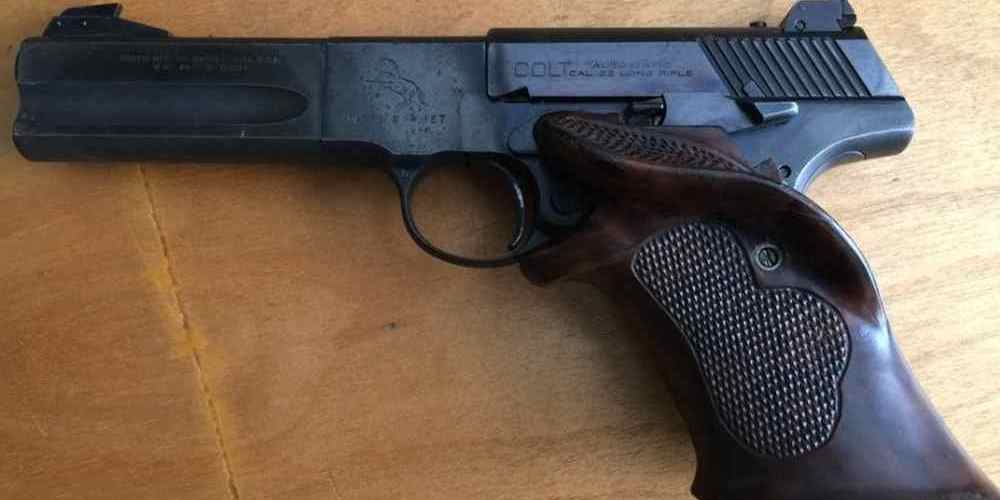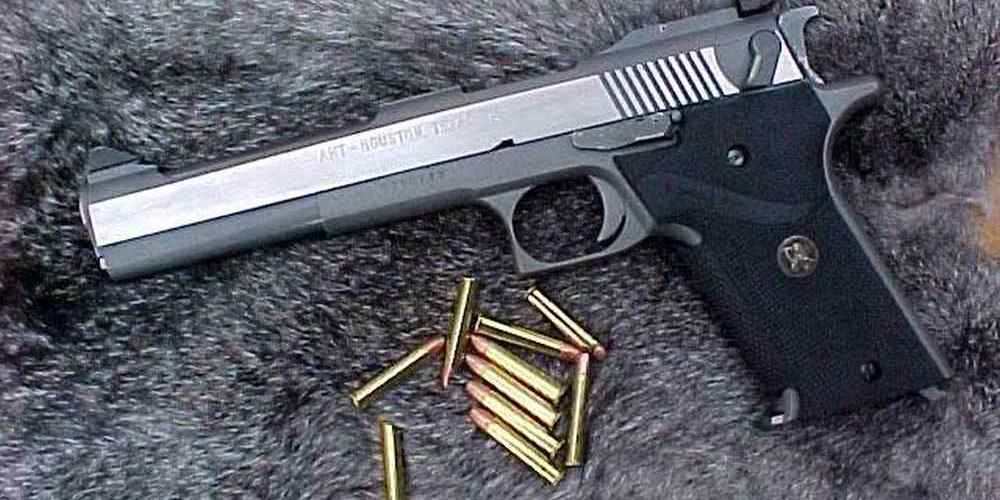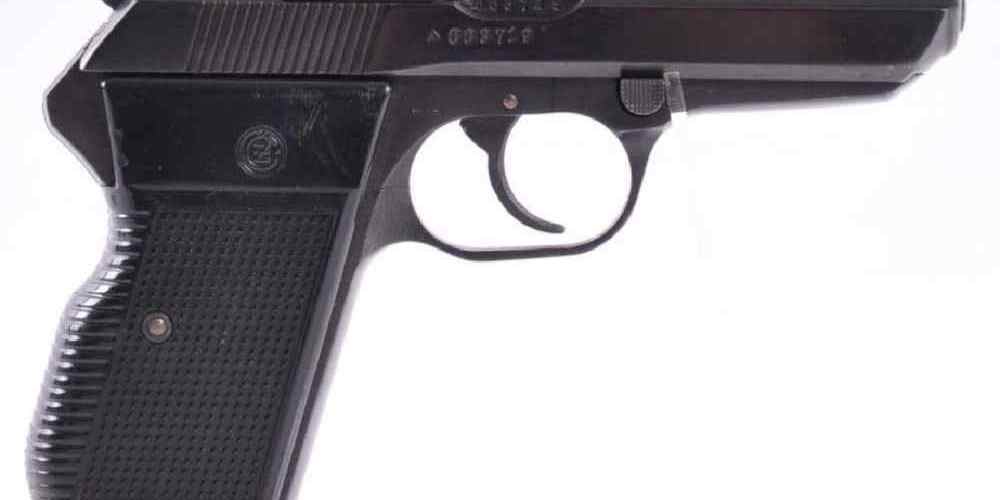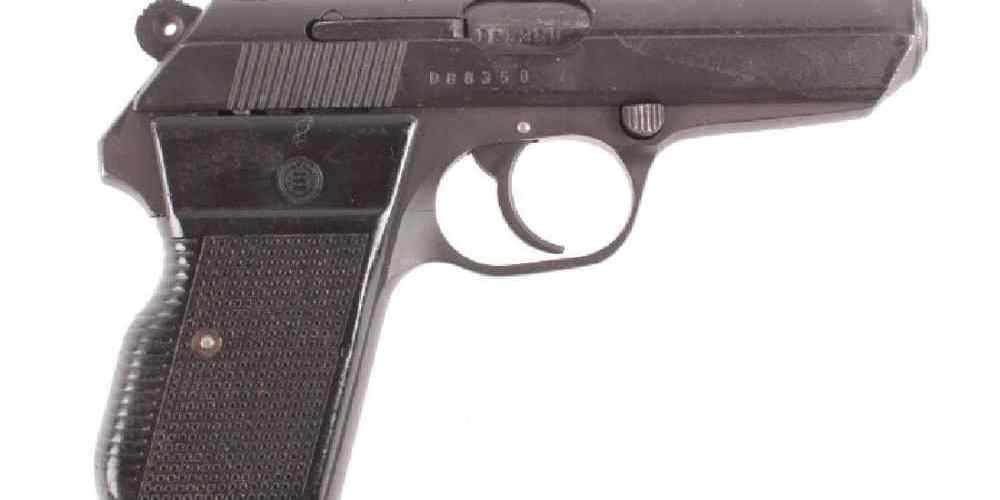“Eliminate the frustration, prevent the misfire.”
Firing Pin Spring
If you own a semi-automatic pistol, you may have experienced the frustrating issue of light primer strikes. This occurs when the firing pin strikes the primer of a cartridge but fails to ignite it, resulting in a misfire. There are several potential causes for light primer strikes, but one common culprit is a worn or weakened firing pin spring.
The firing pin spring is a crucial component of a semi-automatic pistol, as it provides the necessary force to strike the primer with enough energy to ignite the cartridge. Over time, the firing pin spring can become worn out or weakened due to repeated use, leading to light primer strikes. This can be particularly problematic in older pistols or those that have seen heavy use.
One way to determine if a worn firing pin spring is causing light primer strikes is to inspect the spring for signs of damage or wear. If the spring appears bent, broken, or compressed, it may need to be replaced. Additionally, if you notice a decrease in the force with which the firing pin strikes the primer, this could also indicate a worn firing pin spring.
Replacing a firing pin spring is a relatively simple and inexpensive fix that can help prevent light primer strikes. Most gun manufacturers offer replacement firing pin springs for their pistols, or you can purchase aftermarket springs from reputable gun parts suppliers. When replacing the firing pin spring, be sure to follow the manufacturer’s instructions carefully to ensure proper installation.
In addition to replacing the firing pin spring, there are other steps you can take to prevent light primer strikes in your semi-automatic pistol. Regularly cleaning and maintaining your pistol can help prevent wear and tear on the firing pin spring and other components. Using high-quality ammunition can also help reduce the likelihood of light primer strikes, as cheaper or lower-quality ammo may have inconsistent primers.
Another potential cause of light primer strikes in semi-automatic pistols is a dirty or fouled firing pin channel. Over time, debris and fouling can build up in the firing pin channel, preventing the firing pin from moving freely and striking the primer with enough force. Regularly cleaning and lubricating the firing pin channel can help prevent light primer strikes and ensure reliable ignition.
If you continue to experience light primer strikes after replacing the firing pin spring and cleaning the firing pin channel, it may be worth having a gunsmith inspect your pistol for other potential issues. A gunsmith can help diagnose any underlying problems that may be causing light primer strikes and recommend appropriate solutions.
In conclusion, light primer strikes can be a frustrating issue for owners of semi-automatic pistols, but they are often easily remedied. A worn or weakened firing pin spring is a common cause of light primer strikes, but regular maintenance and proper ammunition selection can help prevent this problem. By taking proactive steps to care for your pistol and address any issues promptly, you can ensure reliable ignition and consistent performance from your firearm.

Ammunition Quality
Light primer strikes can be a frustrating issue for shooters using semi-automatic pistols. When a primer strike is too light to ignite the cartridge, it can result in a failure to fire, leaving the shooter in a potentially dangerous situation. Understanding the causes of light primer strikes and how to prevent them is crucial for ensuring the reliability of your firearm.
One common cause of light primer strikes is poor ammunition quality. Ammunition that is old, improperly stored, or of low quality can have inconsistent primer composition or seating, leading to unreliable ignition. It is essential to use high-quality, factory-made ammunition from reputable manufacturers to minimize the risk of light primer strikes.
Another factor to consider is the type of primer used in the ammunition. Some primers are designed to be more sensitive than others, making them more likely to ignite with a light strike. If you are experiencing frequent light primer strikes, it may be worth experimenting with different brands or types of ammunition to see if the issue improves.
In addition to ammunition quality, the condition of your pistol can also play a role in light primer strikes. Dirty or fouled firing pin channels can cause the firing pin to move sluggishly, resulting in insufficient force to ignite the primer. Regular cleaning and maintenance of your pistol, paying particular attention to the firing pin and its channel, can help prevent light primer strikes.
Another potential cause of light primer strikes is a weak or worn-out firing pin spring. Over time, the spring can lose tension, reducing the force with which the firing pin strikes the primer. If you suspect that a weak firing pin spring is causing your light primer strikes, replacing the spring with a new one can often solve the problem.
It is also essential to consider the overall condition of your pistol. Worn or damaged parts, such as a worn firing pin or a damaged firing pin channel, can contribute to light primer strikes. Regular inspection and maintenance of your pistol, including checking for worn or damaged parts, can help prevent issues like light primer strikes from occurring.
In conclusion, light primer strikes can be a frustrating issue for shooters using semi-automatic pistols. By understanding the causes of light primer strikes and taking steps to prevent them, you can ensure the reliability of your firearm. Paying attention to ammunition quality, the type of primer used, the condition of your pistol, and regular maintenance can all help minimize the risk of light primer strikes. If you are experiencing frequent light primer strikes, it may be worth consulting with a qualified gunsmith to diagnose and address the issue. With proper care and attention, you can enjoy reliable performance from your semi-automatic pistol and avoid the frustration of light primer strikes.
Dirty or Worn Firing Pin Channel
Light primer strikes can be a frustrating issue for shooters using semi-automatic pistols. When a primer strike is too light to ignite the cartridge, it can result in a failure to fire, leaving the shooter in a potentially dangerous situation. There are several possible causes for light primer strikes, but one common culprit is a dirty or worn firing pin channel.
The firing pin channel is a critical component of a semi-automatic pistol that houses the firing pin. When the trigger is pulled, the firing pin is released and strikes the primer of the cartridge, igniting the gunpowder and firing the bullet. If the firing pin channel is dirty or worn, it can impede the movement of the firing pin, resulting in a light primer strike.
One of the main causes of a dirty firing pin channel is a lack of proper maintenance. Over time, carbon and debris can build up in the firing pin channel, causing the firing pin to become sluggish and less effective. This can lead to light primer strikes and other malfunctions. To prevent this issue, it is important to regularly clean and lubricate the firing pin channel as part of your routine gun maintenance.
Another possible cause of light primer strikes in semi-automatic pistols is a worn firing pin channel. Over time, the repeated impact of the firing pin against the primer can cause the firing pin channel to wear down, resulting in a reduced striking force. This can lead to light primer strikes and other reliability issues. If you suspect that a worn firing pin channel is the cause of your light primer strikes, it may be necessary to replace the firing pin or have a gunsmith inspect and repair the firing pin channel.
To diagnose whether a dirty or worn firing pin channel is causing your light primer strikes, you can perform a simple visual inspection. Remove the slide from your pistol and carefully examine the firing pin channel for any signs of dirt, debris, or wear. If you notice any buildup or damage, it is likely that the firing pin channel is the culprit.
To remedy a dirty firing pin channel, you can use a cleaning solvent and a small brush to remove any carbon or debris. Be sure to thoroughly clean and dry the firing pin channel before reassembling your pistol. For a worn firing pin channel, you may need to replace the firing pin or seek professional assistance from a gunsmith.
In conclusion, light primer strikes in semi-automatic pistols can be a frustrating issue for shooters. One common cause of this problem is a dirty or worn firing pin channel. By regularly cleaning and maintaining your firing pin channel, you can help prevent light primer strikes and ensure the reliable function of your pistol. If you suspect that a dirty or worn firing pin channel is causing your light primer strikes, be sure to inspect and address the issue promptly to avoid any potential safety hazards.
Hammer Spring Tension
When it comes to semi-automatic pistols, one of the most frustrating issues that shooters can encounter is light primer strikes. This occurs when the firing pin does not strike the primer with enough force to ignite the cartridge, resulting in a misfire. There are several potential causes for light primer strikes, but one of the most common is insufficient hammer spring tension.
Hammer spring tension plays a crucial role in ensuring that the firing pin strikes the primer with enough force to ignite the cartridge. If the hammer spring is too weak, it may not be able to generate sufficient force to reliably detonate the primer. This can result in light primer strikes and a failure to fire.
There are several factors that can contribute to insufficient hammer spring tension. One common cause is wear and tear on the spring itself. Over time, the spring may become compressed or lose its elasticity, reducing its ability to generate the necessary force. In some cases, the spring may even break, rendering the pistol inoperable.
Another potential cause of light primer strikes is improper installation of the hammer spring. If the spring is not properly seated or is installed incorrectly, it may not be able to generate the necessary force to reliably ignite the primer. This can result in inconsistent performance and a higher likelihood of misfires.
Fortunately, there are several steps that shooters can take to address issues with hammer spring tension and prevent light primer strikes. One of the simplest solutions is to replace the hammer spring with a new one. This can help restore the proper tension and ensure reliable ignition.
When replacing the hammer spring, it is important to choose a high-quality replacement that is compatible with your specific pistol model. It is also important to follow the manufacturer’s instructions for installation to ensure that the spring is properly seated and functioning correctly.
In addition to replacing the hammer spring, shooters can also take steps to maintain their pistols and prevent issues with spring tension. Regular cleaning and lubrication can help prevent wear and tear on the spring, ensuring that it remains in good working condition. Shooters should also inspect the spring regularly for signs of damage or wear and replace it as needed.
In conclusion, hammer spring tension plays a critical role in ensuring reliable ignition in semi-automatic pistols. Issues with insufficient tension can lead to light primer strikes and a failure to fire. By understanding the causes of light primer strikes and taking steps to address them, shooters can ensure that their pistols function reliably and safely. Regular maintenance, proper installation, and high-quality replacement parts can all help prevent issues with hammer spring tension and ensure consistent performance on the range.
Slide and Firing Pin Maintenance
One of the most frustrating issues that can occur with a semi-automatic pistol is a light primer strike. This occurs when the firing pin does not strike the primer with enough force to ignite the powder in the cartridge. There are several potential causes for this problem, but one common culprit is a dirty or worn firing pin. In this article, we will discuss the importance of slide and firing pin maintenance in preventing light primer strikes and how to properly care for these components.
The slide of a semi-automatic pistol plays a crucial role in the firing process. It houses the firing pin and provides the necessary force to chamber a new round after each shot. Over time, the slide can become dirty or fouled with debris, which can impede its movement and cause issues with the firing pin. To prevent light primer strikes, it is essential to regularly clean and lubricate the slide of your pistol.
To clean the slide, start by removing it from the frame of the pistol. Use a cleaning solvent and a brush to scrub away any built-up residue or debris. Pay close attention to the firing pin channel, as this is where dirt and grime are most likely to accumulate. Once the slide is clean, apply a small amount of gun oil to lubricate the moving parts. This will help ensure smooth operation and prevent malfunctions during firing.
In addition to cleaning the slide, it is also important to inspect and maintain the firing pin. A dirty or worn firing pin can cause light primer strikes by not delivering enough force to ignite the primer. To prevent this issue, remove the firing pin from the slide and clean it thoroughly with a solvent and brush. Check for any signs of wear or damage, such as burrs or dents, and replace the firing pin if necessary.
After cleaning and inspecting the firing pin, reassemble it in the slide according to the manufacturer’s instructions. Make sure it moves freely and does not bind or stick in the firing pin channel. Test the firing pin by dry firing the pistol several times to ensure it strikes the primer with enough force. If you continue to experience light primer strikes, consider replacing the firing pin with a new one to resolve the issue.
Regular maintenance of the slide and firing pin is essential for preventing light primer strikes in semi-automatic pistols. By keeping these components clean and well-lubricated, you can ensure reliable performance and avoid malfunctions during shooting. Remember to follow the manufacturer’s guidelines for cleaning and maintenance, and always inspect your pistol before each use to ensure it is in proper working order. With proper care and attention, you can enjoy trouble-free shooting with your semi-automatic pistol for years to come.








